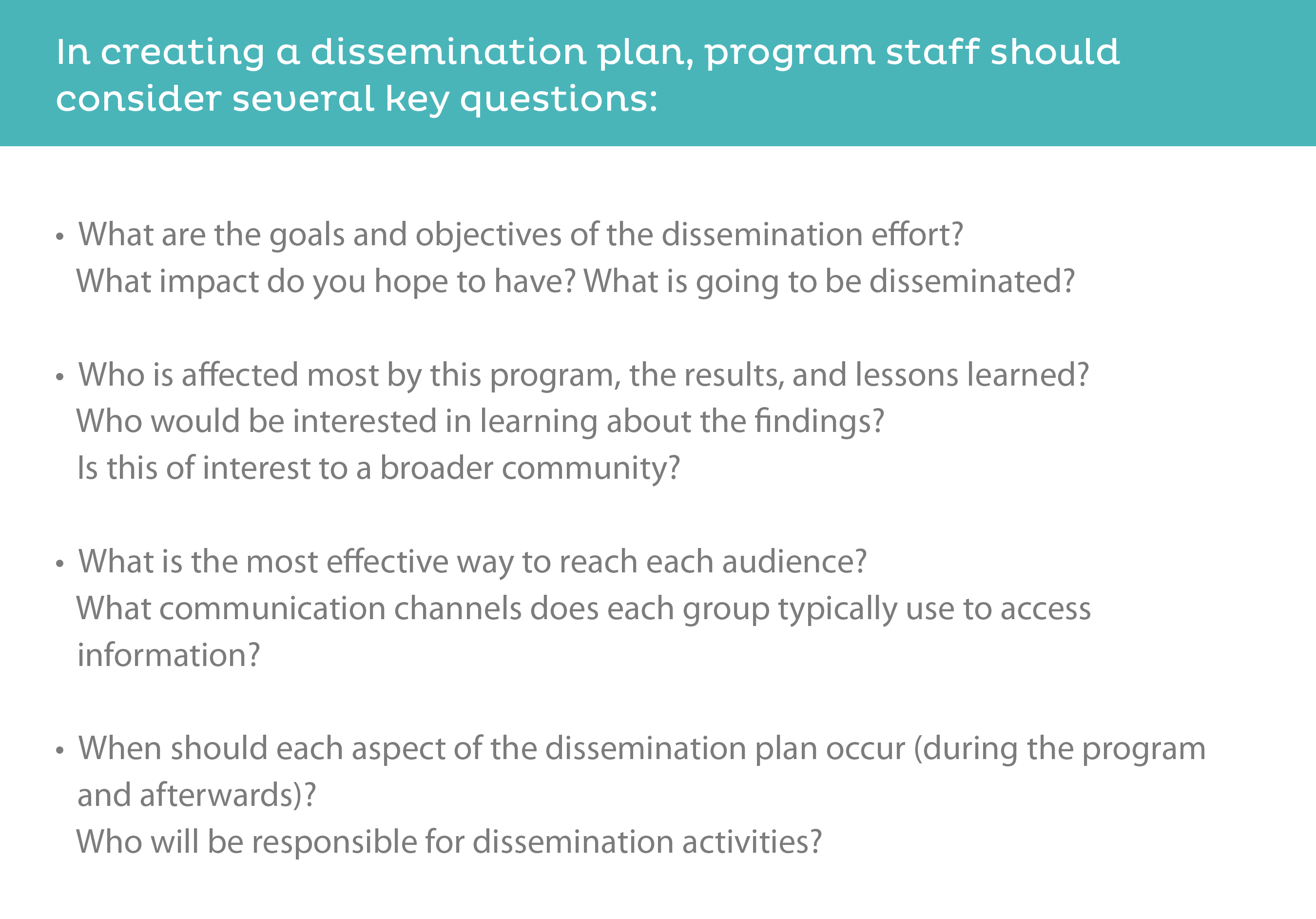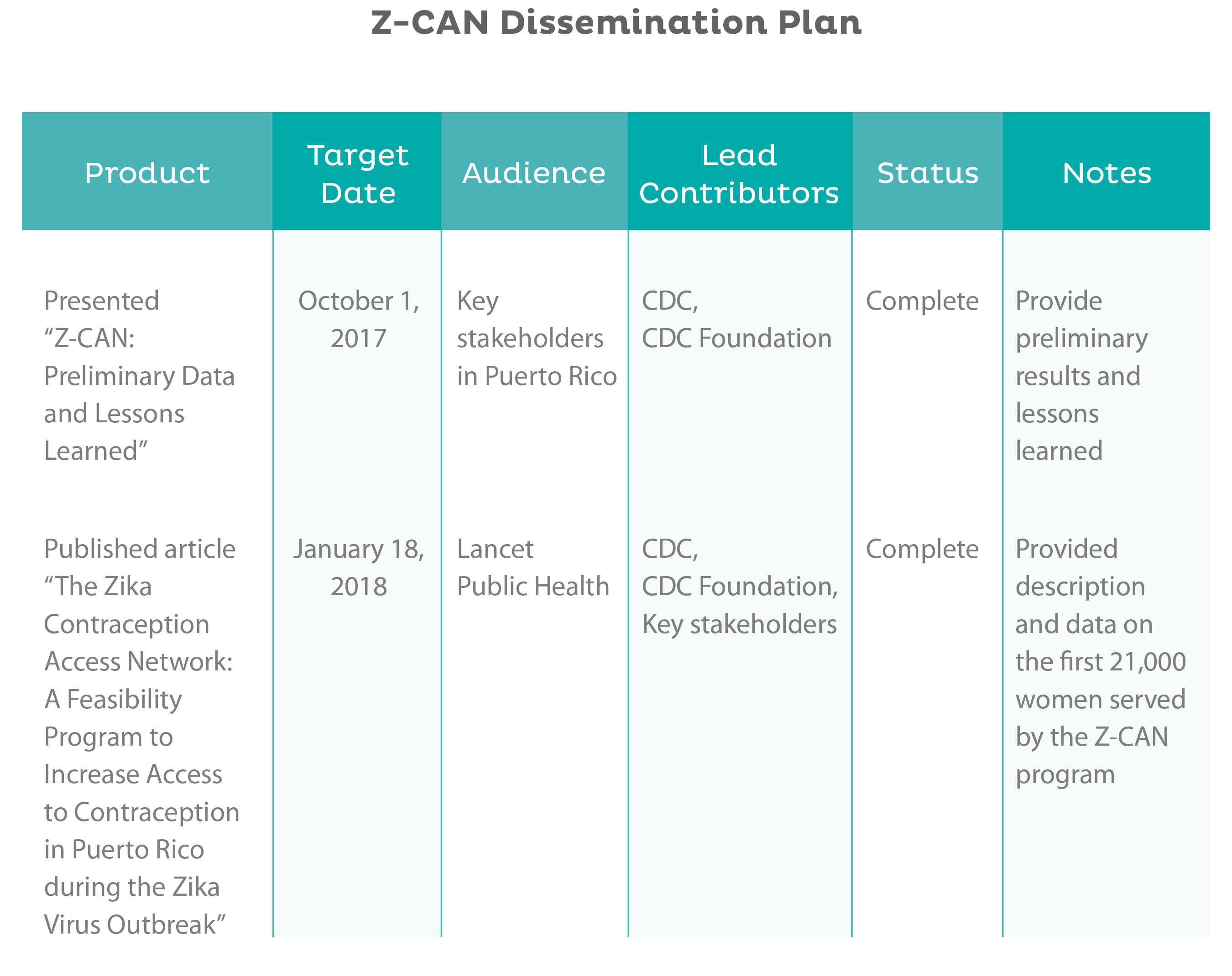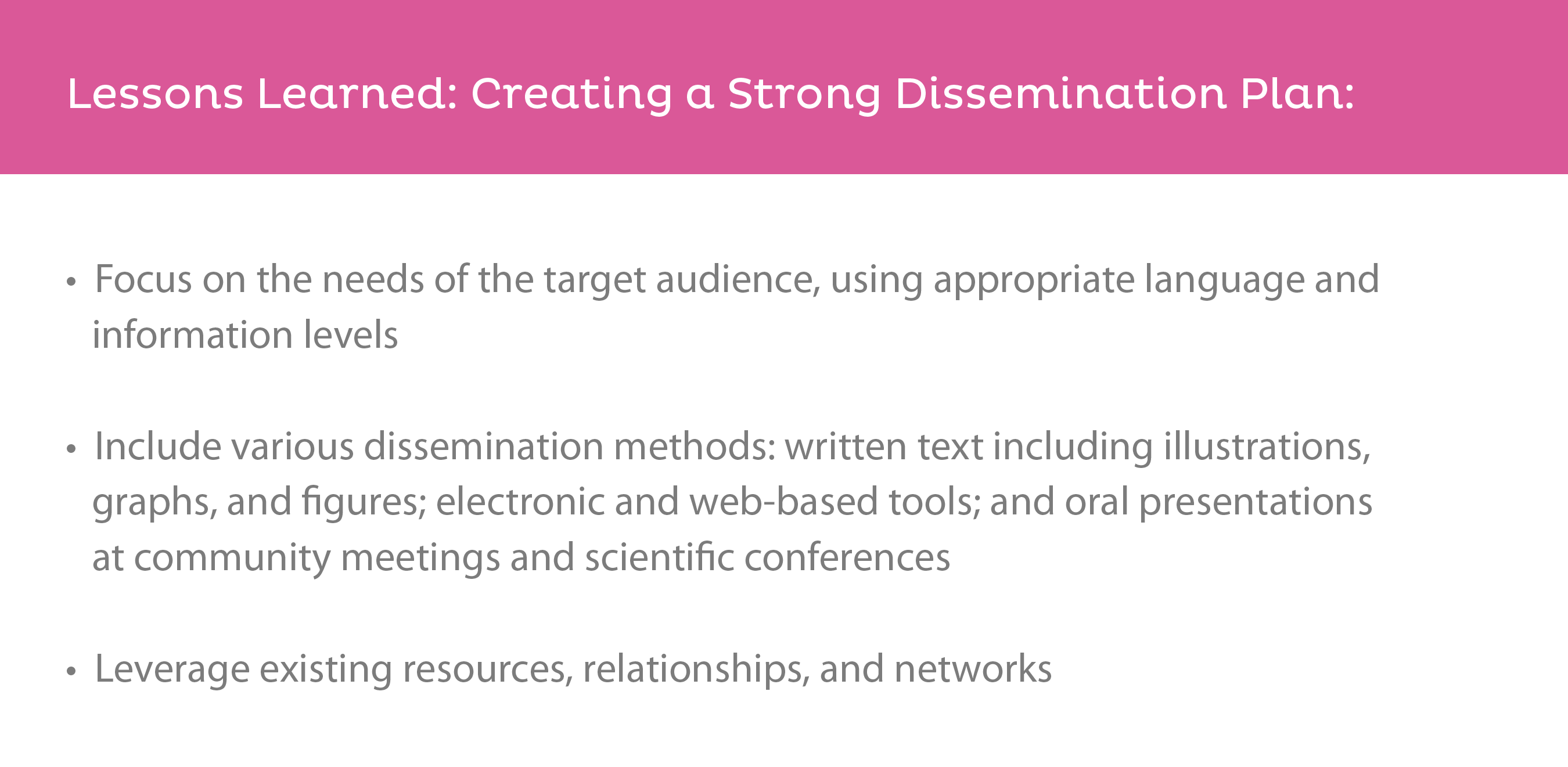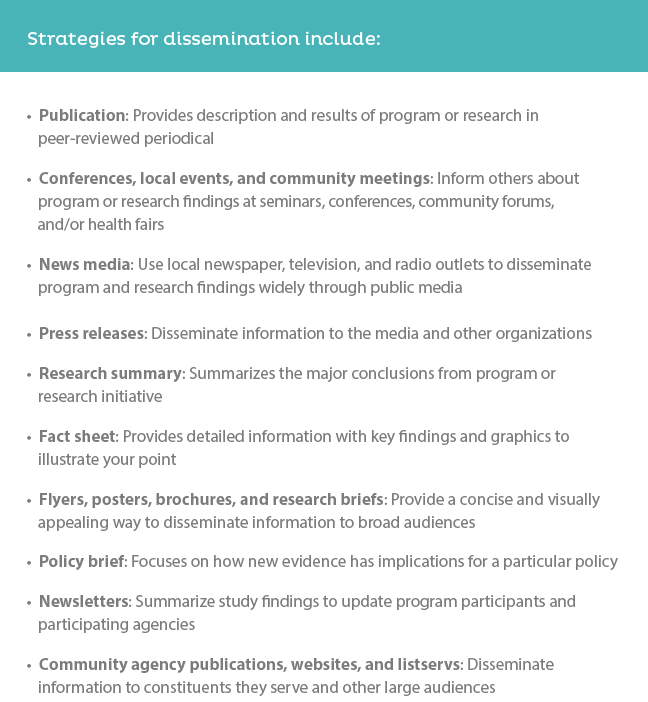Dissemination
Sharing significant findings, successes, challenges, and lessons learned with the right audiences at the completion of a program is important. Dissemination should be a planned process that considers target audiences, key stakeholders, and the settings in which you will share program and evaluation findings. This Section includes guidance on planning for dissemination.
A dissemination plan guides the sharing of program and research findings or products with those who will use the information in practice. Disseminating your findings and products is critical to ensure that others use and benefit from what you learned. Dissemination facilitates wide distribution of information, whether program and research results, or lessons learned from an effective intervention.

In Creating a dissemination plan, program staff should consider several key questions:
- What are the goals and objectives of the dissemination effort?
What impact do you hope to have? What is going to be disseminated? - Who is affected most by this program, the results, and lessons learned?
Who would be interested in learning about the findings?
Is this of interest to a broader community? - What is the most effective way to reach each audience?
What communication channels does each group typically use to access information? - When should each aspect of the dissemination plane occur (during the program and afterwards)?
Who will be responsible for dissemination activities?
Z-CAN Example: Sharing Z-CAN Findings and Lessons
The Z-CAN program developed a Dissemination Plan to share key findings and lessons learned from the Z-CAN program efficiently. The goal was to share information, strategies, and results from the Z-CAN program model that could be replicated or adapted in settings as part of emergency preparedness and response efforts. An additional goal was to disseminate Z-CAN’s design and implementation strategies so that they could be refined and adapted in other non-emergency settings in which increased access to contraception could improve health outcomes.
The Z-CAN Dissemination Plan provides a detailed list of activities, including the strategy, timeline, target audience, who is responsible for activity, and status toward achieving the objectives. This excerpt presents two initial dissemination activities.

Z-CAN Dissemination Plan
| Product | Target Date | Audiance | Lead Contributor | Status | Notes |
|---|---|---|---|---|---|
| Presented “Z-CAN: Preliminary Data and Lessons Learned” | October 1, 2017 | Key stakeholders in Puerto Rico | CDC, CDC Foundation | Complete | Provide preliminary results and lessons learned |
| Published article “The Zika Contraception Access Network: A Feasibility Program to Increase Access to Contraception in Puerto Rico during the Zika Virus Outbreak” | January 18, 2018 | Lancet Public Health | CDC, CDC Foundation, Key stakeholders | Complete | Provided description and data on the first 21,000 women served by the Z-CAN program |

Lessons Learned: Creating a Strong Dissemination Plan:
- Focus on the needs of the target audience, using appropriate language and information level
- Include various dissemination methods: written text including illustrations, graphs, and figures; electronic and web-based tools; and oral presentations at community meetings and scientific conferences
- Leverage existing resources, relationships, and networks
Effective communication will ensure that the right messages are conveyed to the right audiences through the right channels. An effective dissemination plan will help the program staff think about different communication strategies and how to plan appropriately within a given timeline. It also is important to take into account time and budget for dissemination activities, including travel, printing, production, and staff time.

Strategies for dissemination include:
- Conferences, local events, and community meetings: Inform others about program or research findings at seminars, conferences, community forums, and/or health fairs
- News media: Use local newspaper, television, and radio outlets to disseminate program and research findings widely through public media
- Press releases: Disseminate information to the media and other organizations
- Research summary: Summarizes the major conclusions from program or research initiative
- Fact sheet: Provides detailed information with key findings and graphs to illustrate your point
- Flyers, posters, brochures, and research briefs: Provides a concise and visually appealing way to disseminate information to broad audiences
- Policy brief: Focuses on how new evidence has implications for a particular policy
- Newsletters: Summarizes study findings to update program participants and participating agencies
- Community agency publications, websites, and listservs: Disseminate information to constituents they serve and other large audiences
RESOURCES AVAILABLE:
Z-CAN Example: The Dissemination Plan
To share program and evaluation results broadly, the Z-CAN program has developed a Dissemination Plan that includes publications in peer-reviewed periodicals; presentations at domestic and global meetings and conferences; meetings with key stakeholders at the federal, state, and territorial levels; and packaging key information, resources, and tools on how the Z-CAN program was developed, implemented, and evaluated. These combined dissemination efforts will serve as a “how to” for others who are interested in learning, replicating, or adapting key components of the Z-CAN program.
Effective dissemination strategies make program and research findings accessible to a wide range of different relevant stakeholders, and evaluation of your dissemination efforts should always be a part of your dissemination plan. It is important to know how many people your dissemination strategy reached, whether it reached the audiences you intended, and what was the result of your efforts. Some tools for doing this include tracking number of presentations, publications, and meetings attended in which you disseminated information; talking to partners about whom they disseminated information to and how many; using web analytics to look at the number of product downloads; and using social media analytics to look at metrics such as shares, likes, and retweets.
Z-CAN Example: Tracking Dissemination Success
The Z-CAN Dissemination Plan serves as a tracker for presentations and publications, including those in the planning and development phases. Z-CAN program staff periodically meet to review and update the plan with key staff and stakeholders to ensure dissemination efforts are reaching the intended audiences and have appropriate reach to diverse settings where results and lessons learned are applicable. The Z-CAN program staff also developed electronic materials to share key information, resources, and tools, and tracked use and application of the disseminated materials after launch.



